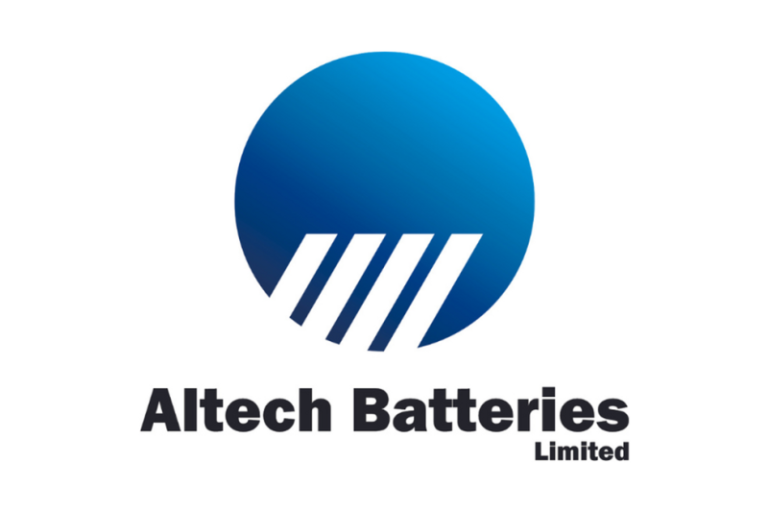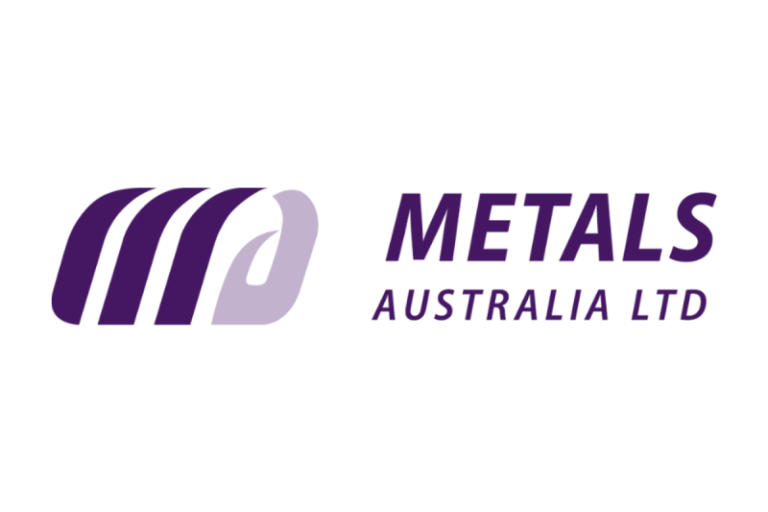Palladium is a lesser-known option for precious metals investors compared to gold and silver, but there are several avenues for investing in the platinum-group metal.
Recently, growing demand and a supply deficit and increased interest have driven interest in ways to invest in palladium. At the same time, precious metals such as gold, silver and the platinum group metals are seeing an influx of safe-haven buying.
Here’s an overview of different ways that market participants can invest in palladium, including profiles of palladium stocks, plus palladium ETFs, bullion and futures.
What is palladium?
Palladium is a silver-white precious metal that is ductile, durable and resistant to corrosion. The metal also has a high melting point. Its symbol on the periodic table of elements is Pd.
Palladium is included in the platinum-group metals (PGMs) category, which also includes platinum, rhodium, iridium, ruthenium and osmium.
What is palladium used for? Palladium’s biggest use is in catalytic converters in gasoline-powered vehicles as it converts pollutants like hydrocarbons and carbon monoxide into water, carbon dioxide and more.
Palladium demand trends
Total palladium demand for 2025 is expected to come in at 9.63 million ounces, down about 4 percent from the previous year’s demand, according to the World Platinum Investment Council (WPIC), which provides quarterly market overviews.
Palladium’s four biggest demand sectors are automotive at 80.7 percent, industrial at 14.1 percent, investment at 2.9 percent and jewelry at 2.3 percent.
In the automotive industry, palladium is used in catalytic converters for vehicle exhaust systems, especially for gasoline engines. High prices for the metal in the early 2020s led to its sister metal platinum being increasingly substituted for palladium.
Demand from this sector is expected to decline by more than 4 percent year-on-year in 2025 to 7.74 million ounces as global auto sales and production are dropping during this period of economic uncertainty.
Another important factor impacting this segment of the market is the growing market for electric vehicles (EVs), which do not require catalytic converters as they don’t create polluting emissions. The transition to electric is placing downward pressure on palladium demand from the auto sector. However, the slowdown in EV adoption worldwide is lessening the impact.
Demand dynamics are shifting within the auto sector following the enactment of the Trump Administration’s One Big Beautiful Bill. Part of the legislation includes an end to EV tax credits that provided up to US$7,500 to consumers who purchased an EV.
Palladium supply trends
In top palladium country South Africa, there have been many mine disruptions in recent years, largely due to strikes, energy shortages and a lack of long-term investment in production facilities. Despite those risks, miners are still moving forward with palladium development in the region.
Russia is the source of 39 percent of global mined palladium supply. The country’s war in Ukraine has placed it at the other end of the sanctions sword as the world’s leaders try to force President Vladimir Putin to end the bloodshed. In April 2022, bourses in London and Chicago suspended two state-owned Russian refiners from their goods-delivery and sponge-accreditation lists. The US and UK took further steps in 2024 to banned trading of refined Russian metals, including palladium, from exchanges.
Despite a 4 percent decline year-over-year in palladium supply, the WPIC estimates that palladium is set to face supply deficits in 2025 and 2026. This is a continuation of an ongoing supply-demand imbalance in the palladium market. Mine supply of the metal is expected to decline by a compound annual growth rate of 1.1 percent from 2024 to 2029.
In 2025, according to WPIC estimates, palladium supply will see a shortfall of 260,000 ounces of the metal, down significantly from the 689,000 ounce deficit recorded in the previous year.
The market is expected to transition into a surplus in 2027. However, that outlook could change if the palladium recycling segment does not ramp up.
“Notably, the forecast of palladium going into surplus is entirely contingent on recycling supply growth,” states the WPIC. “If this does not materialise then palladium could remain in a deficit for the foreseeable future, which could materially alter palladium value expectations.”
How to invest in palladium
Investors who want exposure to palladium’s market dynamics and the palladium price may be interested in investing in the metal. There are several ways to invest in palladium, including palladium mining stocks, PGM ETFs, palladium bars and coins, and palladium futures.
Palladium stocks
One option investors can use to gain exposure to palladium is investing in palladium mining stocks and junior exploration stocks. Investors can buy palladium stocks through stock brokers and online stock-trading platforms.
Investing in primary palladium companies can be tricky, as most of the world’s palladium is produced as a by-product of platinum and nickel mines. However, companies with diversified exposure to metals can also provide protection during down markets for palladium with revenue from their other products.
To help you learn about palladium stocks you can buy, we profile palladium miners and junior PGM exploration companies below.
Major palladium mining stocks
Eastern Platinum (TSX:ELR,OTC Pink:ELRFF)
Eastern Platinum, or Eastplats, has a number of directly and indirectly owned PGM assets in the Bushveld Complex of South Africa. Eastplats is ramping up production of PGMs, including palladium, and chrome concentrates at Crocodile River’s new Zandfontein underground mine.
Impala Platinum Holdings (OTCQX:IMPUF,JSE:IMP)
Impala Platinum, or Implats, is one of the most prominent platinum and palladium mining companies in the world. The company has majority ownership or joint ventures in four PGM mining operations and a refining facility in South Africa’s Bushveld Complex, two PGM mining operations in Zimbabwe and the Lac des Iles PGM mine in Ontario, Canada.
Sibanye Stillwater (NYSE:SBSW,JSE:SSW)
Sibanye Stillwater is one of the world’s largest primary platinum and palladium producers, and its circular economy business model includes palladium recycling. The company has numerous PGM operations in South Africa and the US. Its US Stillwater and East Boulder operations are in Montana’s Stillwater Complex, the country’s largest source of PGMs.
Valterra Platinum (LSE:VALT,JSE:VAL,OTC Pink:ANGPY)
Valterra Platinum, formerly Amplats, is a leading primary producer of PGMs, supplying mined and recycled platinum products. The company’s operations are the Mogalakwena PGM mine, Amandelbult complex and Mototolo mine in South Africa’s Bushveld Complex. Valterra was demerged from Anglo American (LSE:AAL,OTC Pink:AAUKF) in 2025.
Junior palladium stocks
The following TSXV- and TSX-listed companies are examples of smaller-scale stocks that offer investors exposure to palladium, in addition to platinum and other metals.
Bravo Mining (TSXV:BRVO,OTCQX:BRVMF)
Bravo Mining owns the Luanga PGM-gold-nickel project in the Carajás Mineral Province of Brazil. The project’s 2025 mineral resource estimate shows measured and indicated resources of 10.4 million ounces of palladium equivalent at 2.04 grams per metric ton (g/t).
Canada Nickel Company (TSXV:CNC,OTCQX:CNIKF)
Canada Nickel Company is advancing its Crawford nickel-cobalt sulfide project in the Timmins-Cochrane mining camp of Ontario. The project also hosts significant palladium and platinum mineralized zones.
Canadian North Resources (TSXV:CNRI,OTCQX:CNRSF),
Canada North Resources owns the late-stage Ferguson Lake exploration project in the Kivalliq Region of Nunavut, Canada. The polymetallic project hosts base metals nickel, copper and cobalt as well as PGMs, including 3.53 million ounces of palladium and 630,000 ounces of platinum in the indicated category.
Chalice Mining (ASX:CHN)
Chalice Mining owns the Gonneville project in Western Australia, which holds palladium, platinum, nickel, cobalt and copper. The Western Australia government designated Gonneville a strategic project in recognition of the project’s importance for the country’s critical metals industry, and Chalice expects to complete its pre-feasibility study in November 2025.
Clean Air Metals (TSXV:AIR,OTCQB:CLRMF)
Clean Air Metals is focused on its wholly owned exploration-stage Thunder Bay North critical minerals project in the Thunder Bay region of Ontario, Canada. The project hosts platinum, palladium, copper and niobium mineralization, with an indicated resource of 1.2 million ounces of combined platinum and palladium.
GT Resources (TSXV:GT)
GT Resources is developing critical green transportation metals projects in North America and Europe. Its portfolio includes the North Rock copper-palladium-platinum project in Canada, and the Läntinen Koillismaa copper-palladium-platinum project in Finland.
Ivanhoe Mines (TSX:IVN,OTCQX:IVPAF),
Ivanhoe Mines is developing the Platreef project in South Africa. The Robert Friedland-led company is working on a phased expansion of the project, which is expected to become one of the world’s largest and lowest-cost producers of palladium, platinum, rhodium, nickel, copper and gold.
Lifezone Metals (NYSE:LZM)
Lifezone Metals has developed Hydomet, a hydrometallurgical processing technology, as a cleaner alternative to smelting for base and precious metals refining. The company has a joint venture partnership agreement with Glencore (LSE:GLEN,OTC Pink:GLCNF) in which Lifezone will use Hydromet to recycle palladium, platinum and rhodium, and Glencore will act as the offtaker and marketer.
New Age Metals (TSXV:NAM)
New Age Metals is a junior mineral exploration company developing its discrict-scale River Valley property in Ontario, considered one of North America’s largest undeveloped platinum group element projects. The company also holds a 100 percent interest in the Genesis PGE-copper-nickel project in Alaska.
Platinum Group Metals (TSX:PTM,NYSE:PLG)
Platinum Group Metals is working to bring into production its advanced-stage Waterberg PGM deposit in South Africa’s Bushveld Complex. First discovered by the company, the project is now a joint venture with key partners that include Implats at 14.86 percent. Platinum Group retains a 50.16 percent position in Waterberg and will be the majority operator.
Stillwater Critical Minerals (TSXV:PGE,OTCQB:PGEZF)
Stillwater Critical Minerals is advancing its large-scale flagship Stillwater West platinum, palladium, nickel, copper, cobalt and gold project in Montana, US.
Ramp Metals (TSXV:RAMP)
Ramp Metals owns the Rottenstone SW and PLD projects in Saskatchewan, Canada. Rottenstone is situated adjacent to a northeast-southwest geological formation connected to the historic Rottenstone mine, which produced nickel, PGMs and gold, although Ramp is currently focused on gold and copper at the site.
Palladium ETFs
Palladium-backed exchange-traded funds (ETFs) and products (ETPs) track the precious metal like an index fund, but trade like stocks on an exchange. These palladium and PGM ETFs allow US, Canadian and Australian investors access to the palladium price.
Sprott Physical Platinum and Palladium Trust Unit (ARCA:SPPP,TSX:SPPP)
The Sprott Physical Platinum and Palladium Trust ETF was created to invest and hold substantially all of its assets in physical palladium and platinum bullion. It currently holds over 155,000 ounces of palladium and over 235,000 ounces of platinum. The portfolio is held in custody at a federal crown corporation of the Canadian government.
Aberdeen Standard Physical Palladium Shares (ARCA:PALL)
The Aberdeen Standard Physical Palladium Shares is designed to track the performance of the palladium price, less expenses. It holds over 500,000 ounces of palladium in London at a secured vault belonging to JPMorgan Chase & Co. (NYSE:JPM).
Global X Physical Palladium Structured (ASX:ETPMPD)
Global X Physical Palladium is an ASX-listed platinum ETP that provides Australian investors access to palladium held in JP Morgan storage facilities.
Palladium bars and coins
Another option for investing in palladium is by holding physical assets directly, such as bullion. In fact, financial investors may buy palladium bullion bars, palladium bullion coins or collectible palladium coins for portfolio growth. This approach may suit multiple kinds of investors, from those looking to invest small amounts of money in the metal to those with larger quantities of cash.
Kitco’s online physical palladium market is an example of where investors can buy and sell palladium bars and palladium coins, and this option includes home delivery. Another option is BullionVault’s online palladium marketplace, which allows investors to trade palladium that is stored in vaults, although they do not get to physically hold their metals themselves.
For more information on how to invest in precious metals coins and bullion, check out our guide on buying physical gold, as much of the advice also applies to physical palladium investing.
Palladium futures
Palladium futures, a derivative instrument tied directly to the price of the actual metal, are another key option.
Palladium futures are available for trade on the New York Mercantile Exchange (NYMEX), which is part of the CME Group. For more information on precious metals futures investing, see our guides to gold futures and silver futures.
For investors unfamiliar with futures investing, futures are a financial contract between an investor and a seller, in which the investor agrees to purchase an asset from the seller at an agreed-upon price based on a date set in the future.
Rather than owning physical metals themselves, investors speculating in the futures market are instead making bets on whether the price of a particular commodity will rise or fall in the near future.
For example, if you buy a palladium futures contract believing the price of metal is set to rise, and your prediction proves correct, you could gain a return on your investment by selling the now more valuable futures contract before it expires.
However, they’re not for novice investors, so be sure to do further research if you decide to use this investment method.
Securities Disclosure: I, Melissa Pistilli, hold no direct investment interest in any company mentioned in this article.
This post appeared first on investingnews.com










